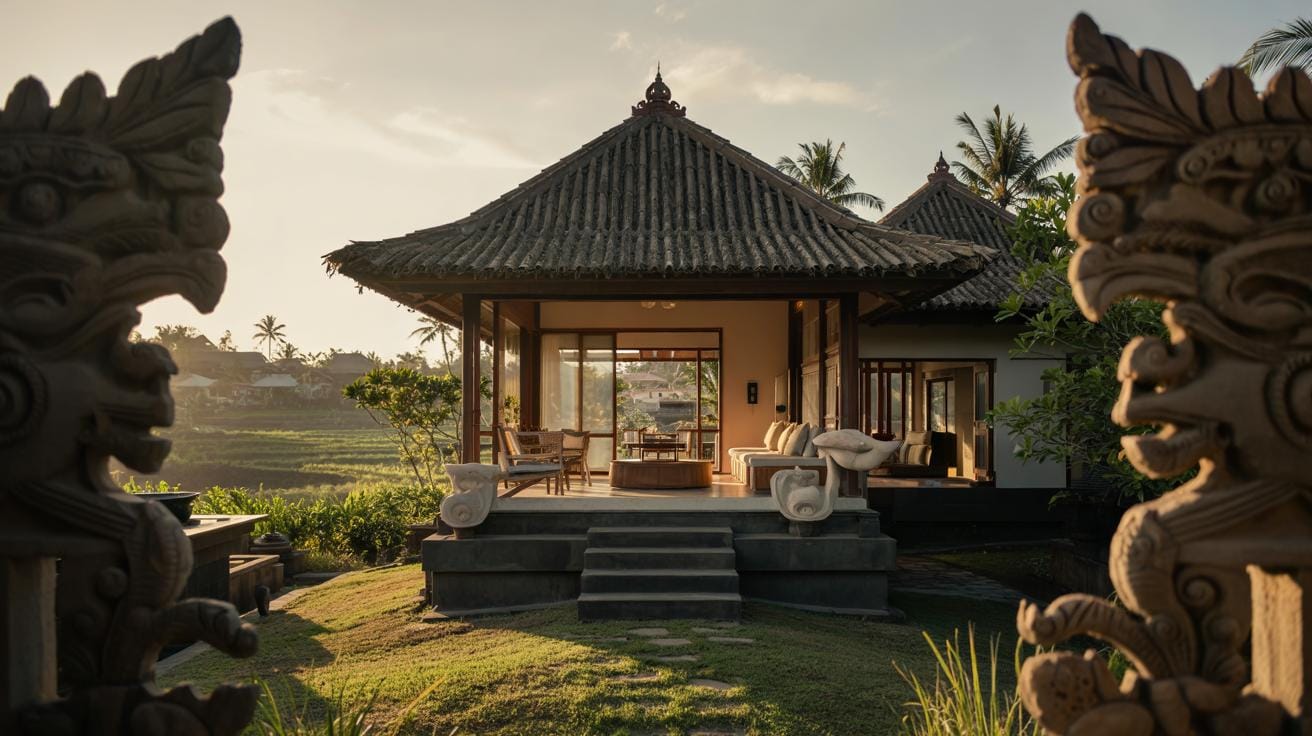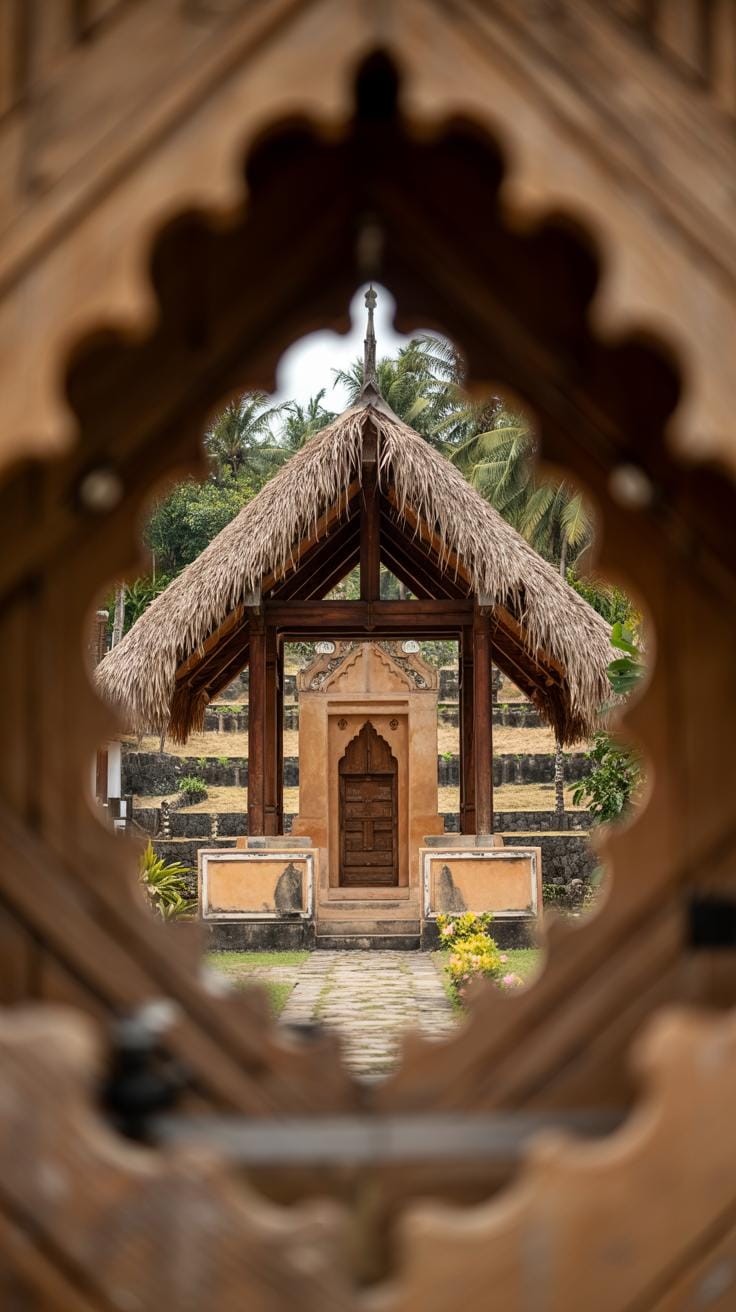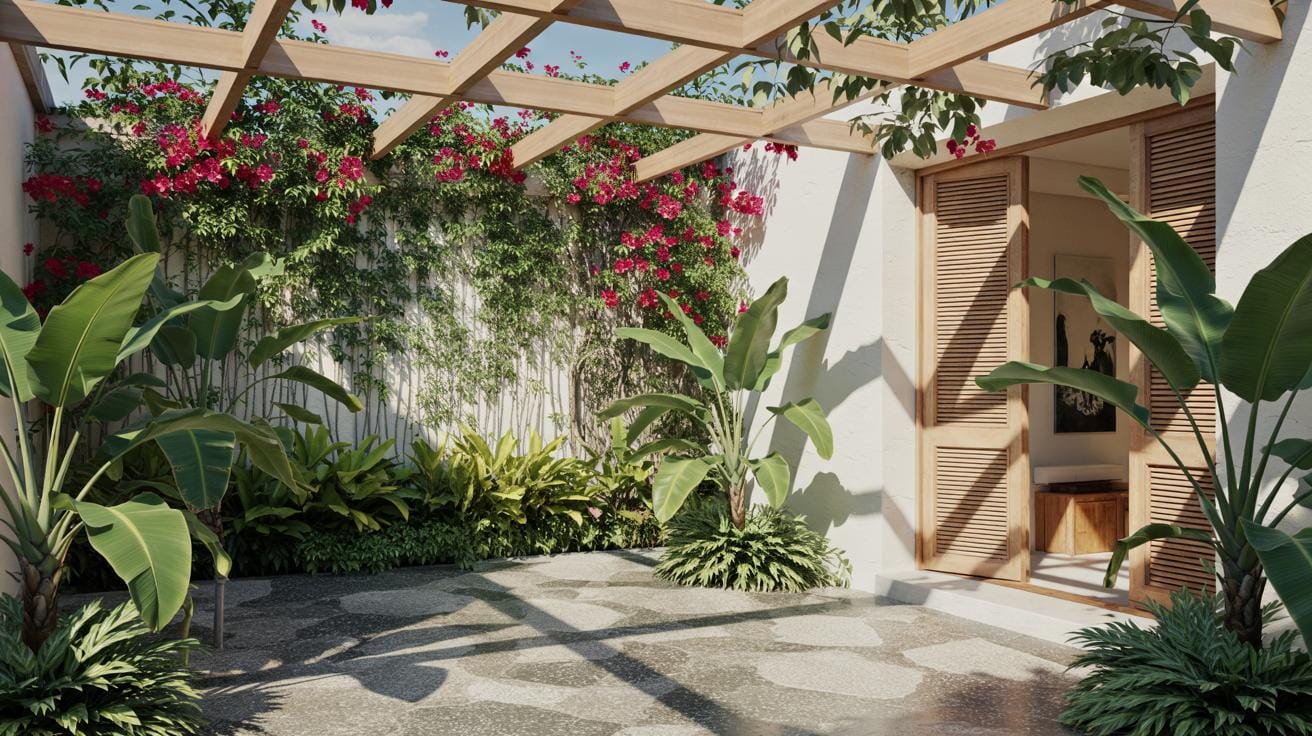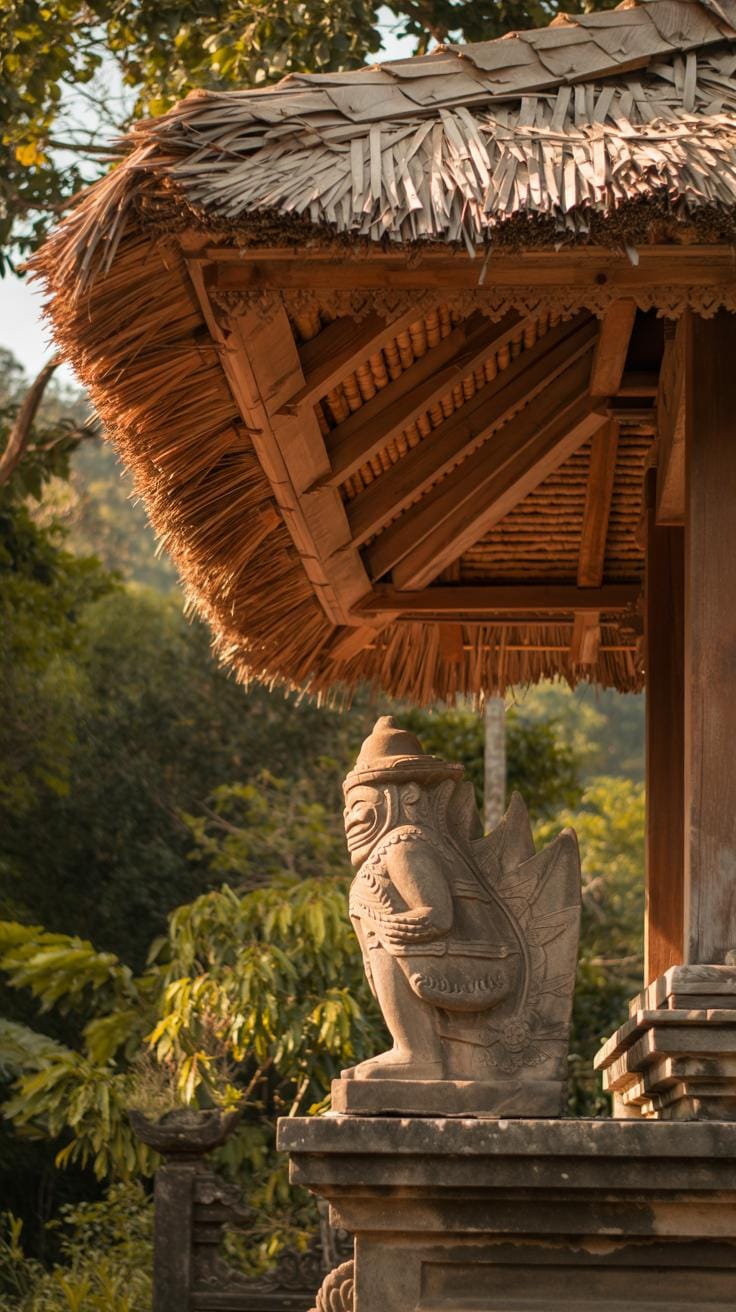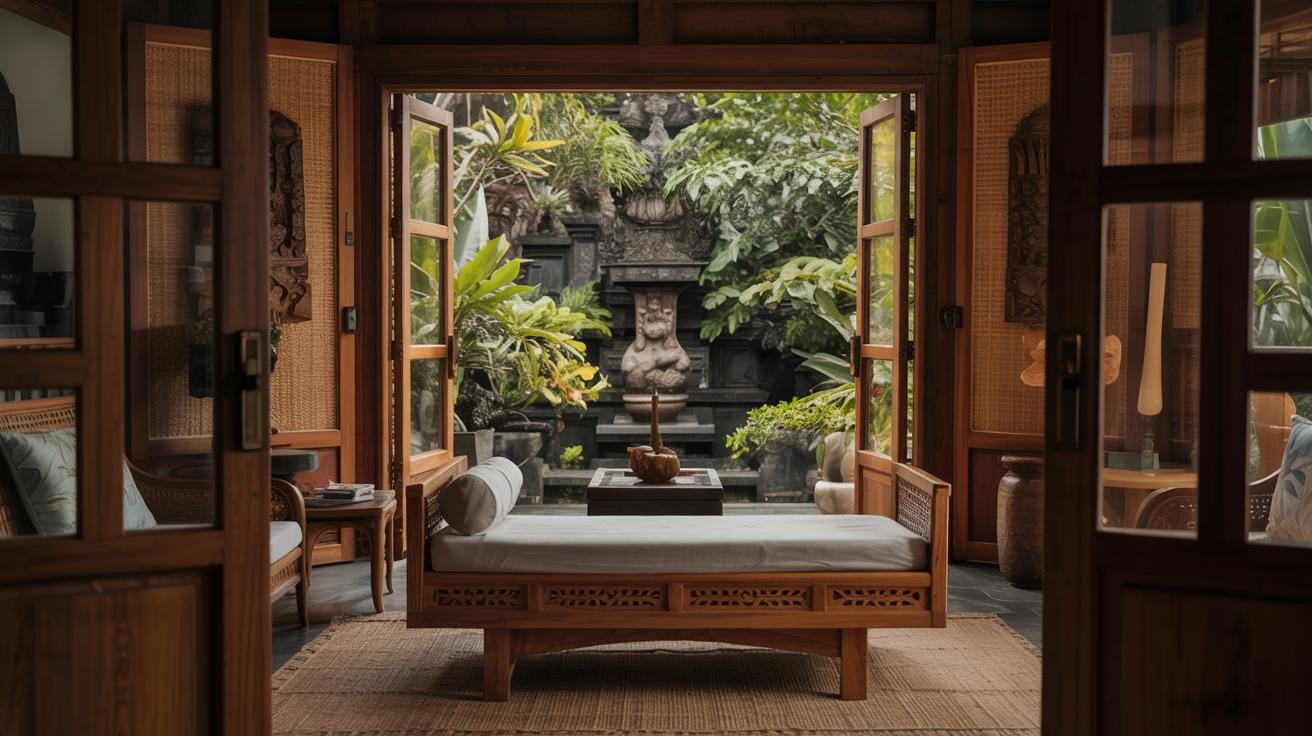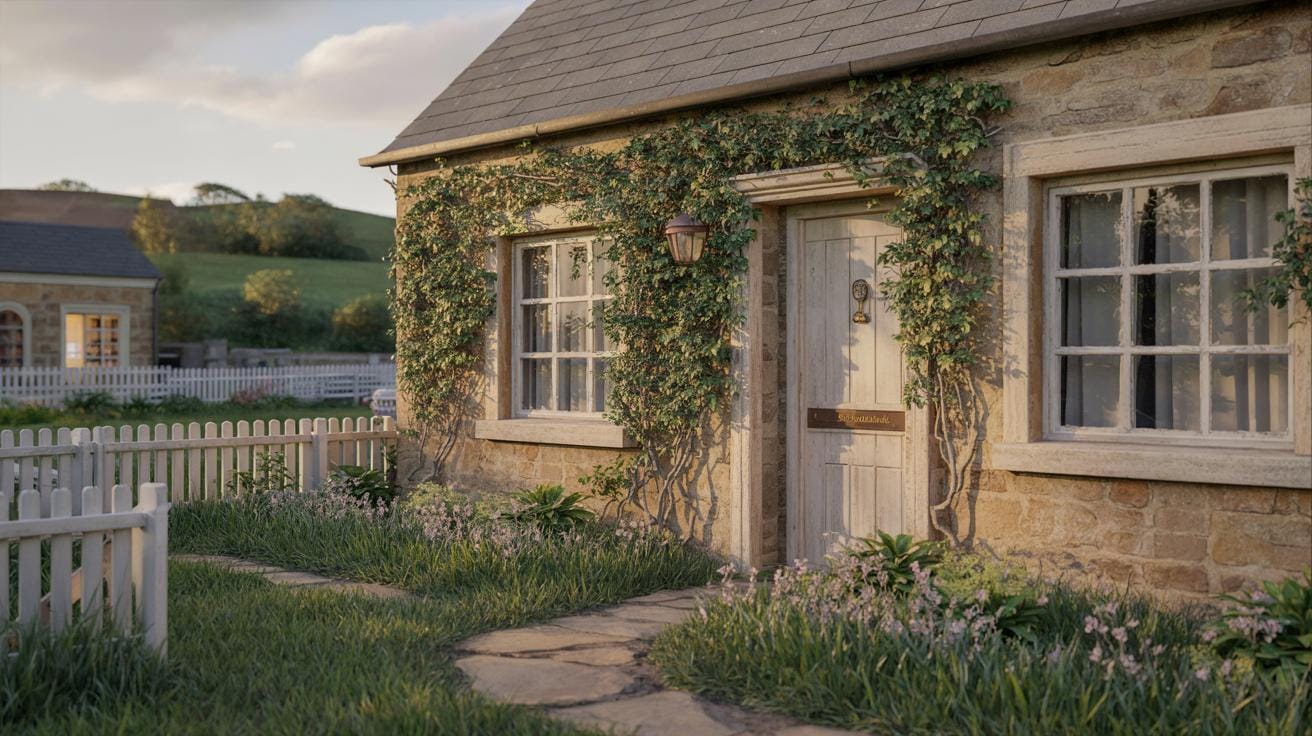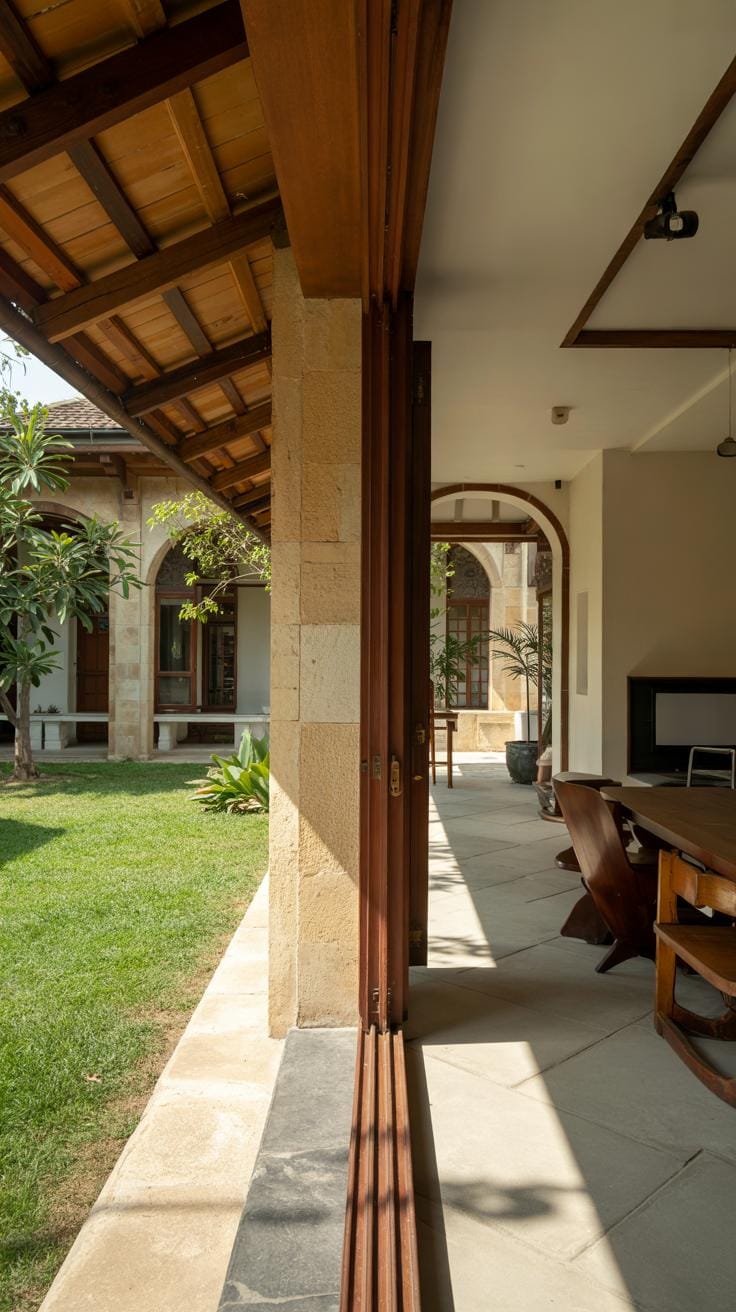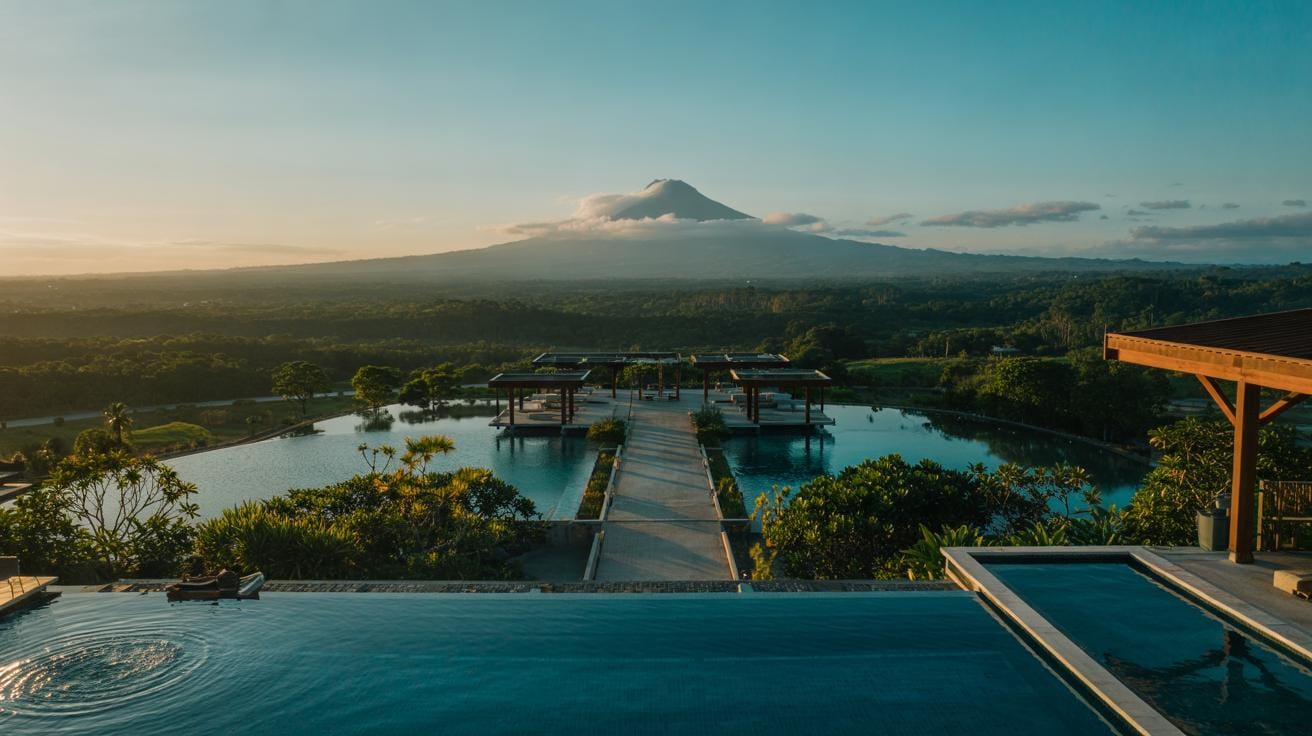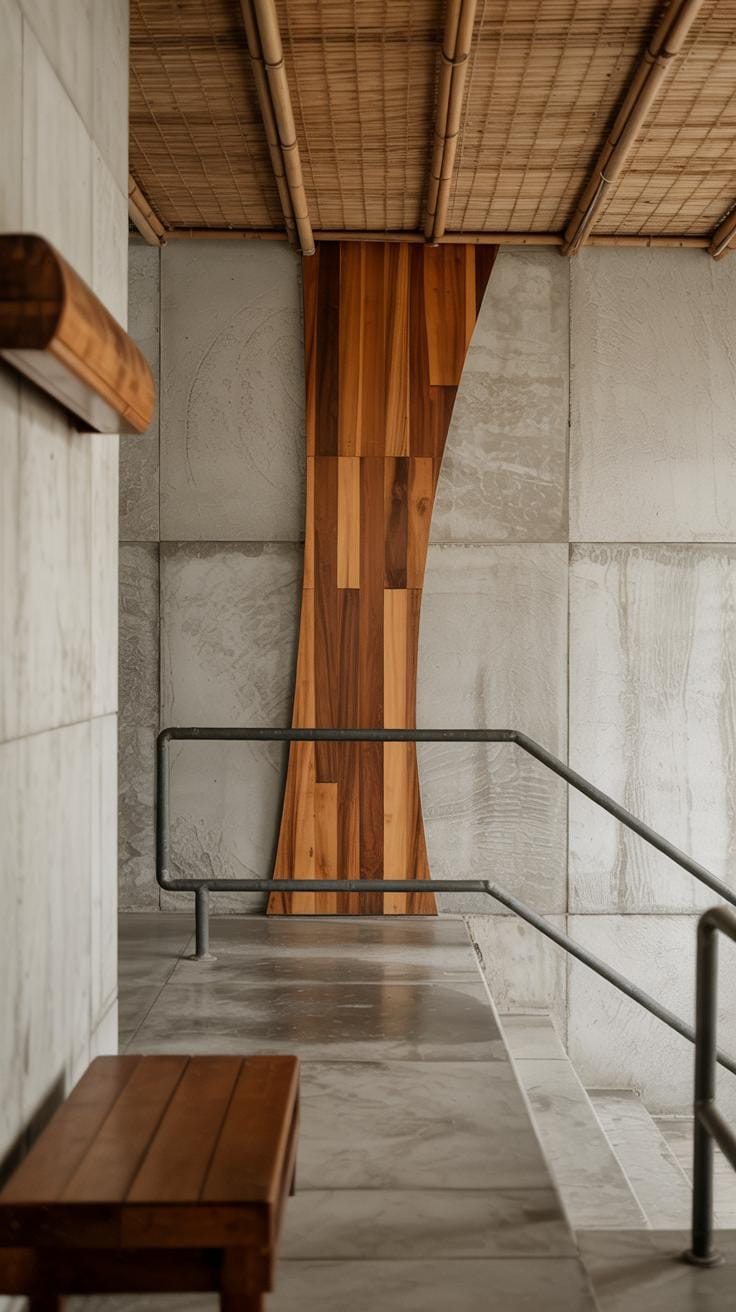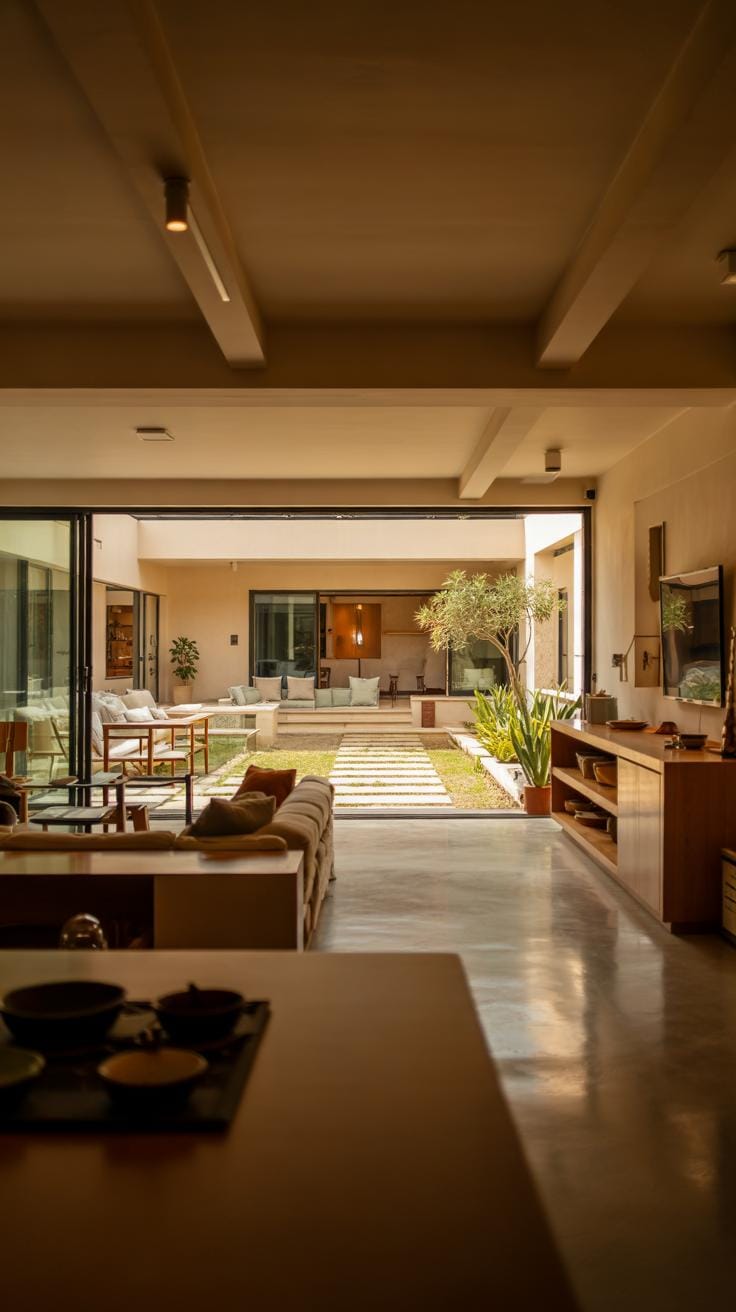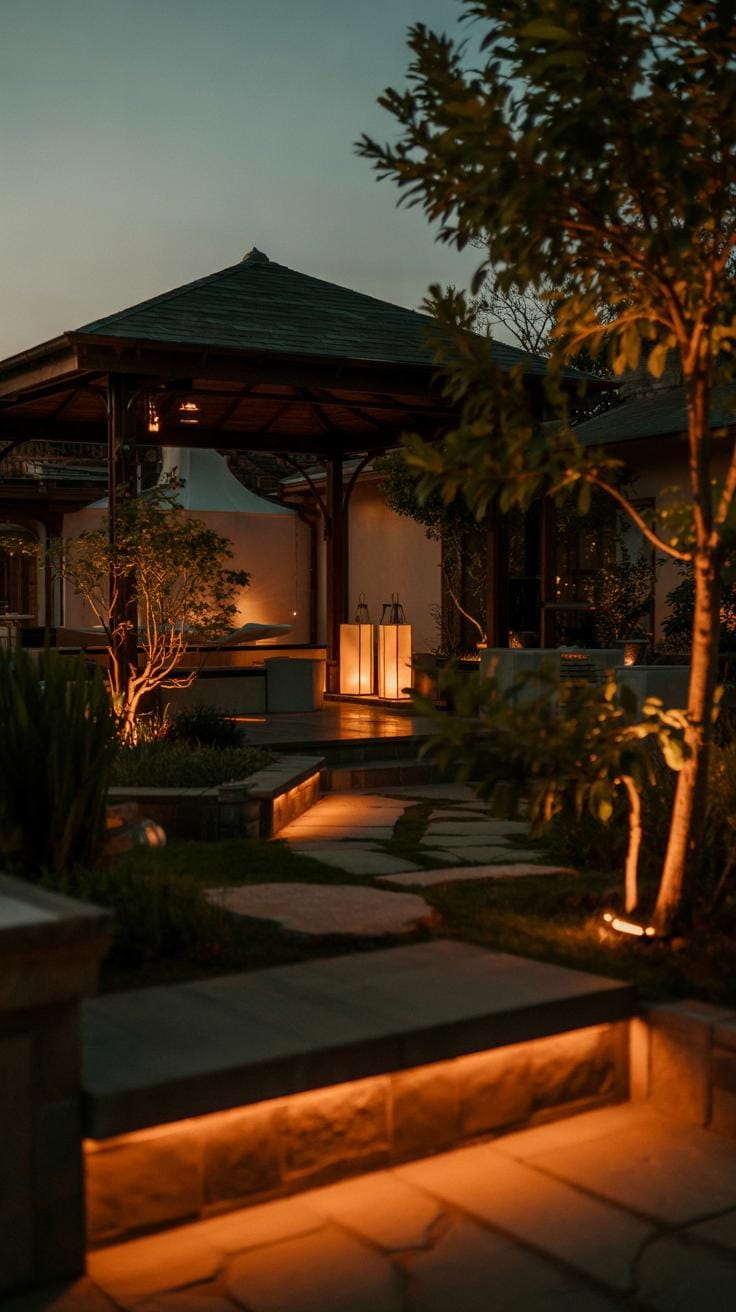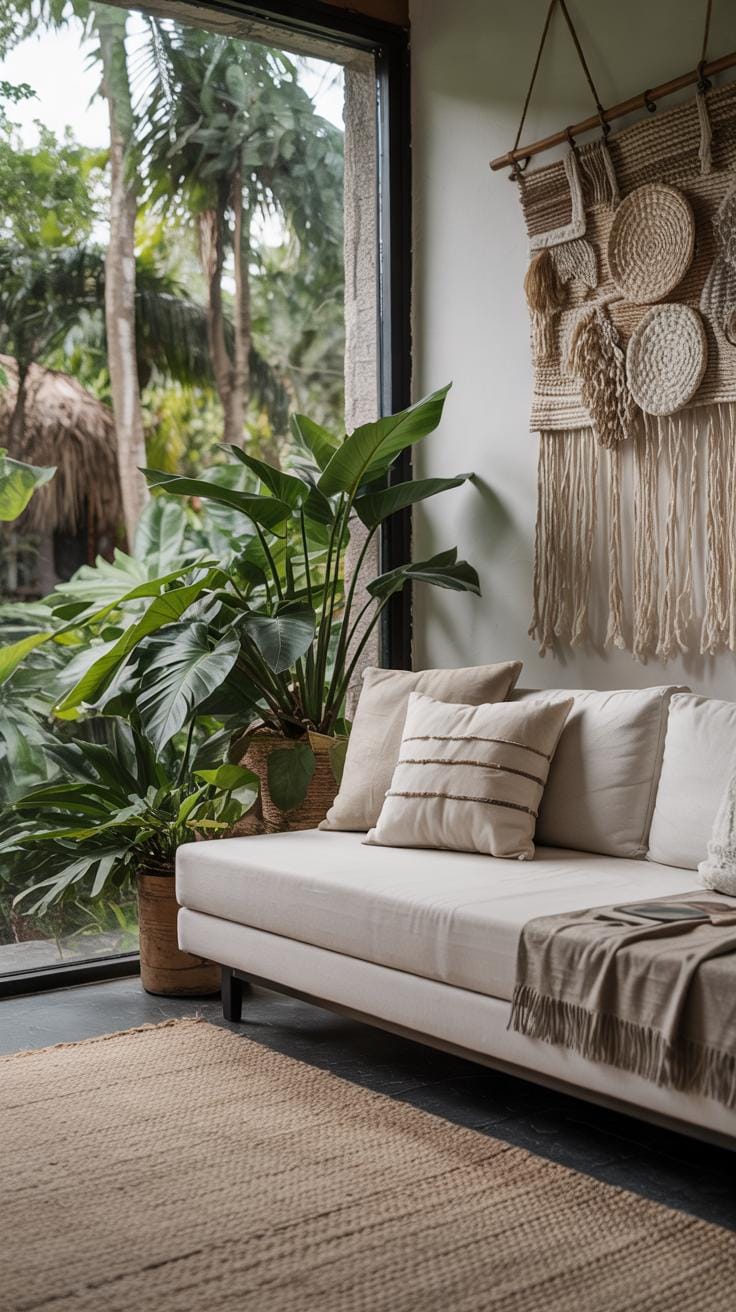Introduction
Balinese style homes offer a unique charm that captures the essence of the Indonesian island’s rich culture and natural beauty. You will find that these homes are designed to create a peaceful and harmonious living environment by incorporating natural materials, open-air layouts, and an intimate connection with nature. Their architectural style draws heavily on traditional Balinese elements such as intricate woodwork, thatched roofs, outdoor living spaces, and lush gardens that promote tranquility.
If you want to enhance your Bali style home, merging modern elements can create a balance of comfort and elegance without losing the traditional appeal. Modern influences can improve functionality, add sleek touches, and introduce contemporary materials that complement the warm and natural feel. This guide will help you explore practical ways to unite Bali style architecture with modern design, allowing your home to reflect both cultural heritage and modern sophistication.
Understanding Bali Style Architecture
Bali style homes focus on creating a close connection with nature. You will find open layouts that let fresh air flow easily through the space, making the home feel light and airy. Natural materials like wood and stone shape the structure and walls, keeping the home in harmony with its surroundings.
The design emphasizes balance and harmony. Rooms often open out to gardens or courtyards, blending indoor and outdoor living seamlessly. Traditional decorations such as carved wood panels and statues add character and cultural meaning.
When you build or renovate your home using Bali style principles, think about how the space will flow. Does it invite natural light? Can you enjoy the outdoors from every room? How do traditional details enhance the warmth of your home? Focusing on these ideas will help you create a space that feels calm and grounded.
Natural Materials and Craftsmanship
Bamboo, teak wood, stone, and thatch form the core materials used in Bali style homes. Bamboo provides flexibility and strength, perfect for framing or fencing. Teak wood offers durability and rich texture, often carved with intricate patterns.
Stone is used in flooring and walls, adding a natural, earthy quality. Thatch roofs offer insulation while maintaining an organic look. Skilled craftsmen bring these materials together by hand to ensure each element fits naturally and looks authentic.
When you choose these materials, consider their environmental impact and longevity. How will the natural textures age? Can local artisans help bring your vision to life? Using authentic materials with fine craftsmanship enhances both the look and value of your home.
Emphasis on Indoor-Outdoor Harmony
Bali style homes blur the line between inside and outside. Open spaces connect rooms to gardens, courtyards, and water features. Large sliding doors or windows invite natural light and fresh air in.
Gardens become extensions of the living area, filled with tropical plants and shaded nooks. Ponds, fountains, or small pools add calming sounds and a refreshing atmosphere.
Ask yourself how your home can better engage with nature. Can you create breaks in walls for plants? Could water elements improve your space’s feel? Designing with this harmony in mind will help your home breathe and feel more spacious.
Core Elements Defining Traditional Balinese Homes
Traditional Balinese homes stand out because of specific structural features that define their unique character. One of the most striking aspects is the alang-alang thatched roof. This roof covers the house and is made from dried grass that blends functionality with cultural meaning.
Carved wooden doors and windows are another key feature. These often display detailed craftsmanship and tell stories through cultural motifs. You might wonder how these carvings affect your home’s atmosphere. They invite a connection to Balinese art and tradition right at your doorstep.
Pavilions, or bale, provide open spaces within the compound. These open-air structures serve as places for social gathering, relaxation, or prayer, showing how Balinese homes are designed around community and spirituality. When you step inside, you experience a harmony between built space and daily living.
Thatched Roofs and Architecture
The alang-alang thatched roof has practical and symbolic roles. It keeps the interior cool in the tropical heat by allowing air circulation. The material also naturally repels water during heavy rain, making it ideal for Bali’s climate.
On a cultural level, these roofs symbolize a connection to nature. Using organic materials like dry grass supports an eco-friendly lifestyle without losing beauty. How can your home benefit from such a natural cooling method? Incorporating alang-alang roofs adds an authentic touch while improving comfort.
Besides performance, the roof’s layered design creates a visually striking silhouette. It merges simplicity with tradition, elevating the entire structure. This blend keeps your home grounded in Balinese heritage yet suited for everyday living.
Ornate Wood Carvings and Decor
Carvings on doors, windows, and walls serve more than decoration. Each pattern carries spiritual meaning or tells a story from Hindu-Balinese culture. When you examine these designs, you find symbols of protection, prosperity, and harmony.
These artistic details require skilled craftsmen, reflecting a commitment to preserving tradition. Including such woodwork in your home creates a tangible link to Bali’s rich history. What message do you want your home to send through its decor?
Integrating these carvings does more than beautify the home. They set a mood of calm and respect for culture. Investing in authentic wood decor can transform ordinary spaces into places filled with meaning and intention. How might this influence your everyday living experience?
Why Combine Modern Design with Bali Style
You can enjoy the best of both worlds by mixing modern design elements with Bali style homes. Modern features bring more comfort into living spaces, making daily life easier and more enjoyable. Imagine controlled lighting that adjusts with natural daylight or smart climate systems that keep your home cool without disrupting its serene atmosphere. These improvements boost your home’s function while maintaining the warm, inviting Bali style.
This blend also keeps your home fresh and updated. You won’t lose the traditional charm of Balinese architecture, but you’ll experience a look that feels current and neat. Modern design helps highlight the beauty of carved wood or thatching while clearing away clutter, creating a balanced and peaceful space.
Could your living space benefit from better comfort and a cleaner, updated look without losing its cultural roots? Combining modern design with Bali style offers a practical and pleasing way to enhance your home every day.
Improving Functionality with Modern Ideas
Modern design solves practical issues your Bali style home might face. Lighting is one example. Using recessed LED lights or smart bulbs can brighten rooms naturally without harming the traditional feel. These options let you control light intensity for different times or moods, supporting activity and relaxation.
Heating and cooling also improve with discreet systems. You can install energy-efficient air conditioning or ceiling fans that don’t clash with alang-alang roofs or bamboo elements. Thoughtful placement keeps them out of sight while increasing comfort in humid or cool seasons.
Storage space often limits Bali homes. Modern built-ins, such as sleek cupboards or under-bench drawers, provide ample room without adding bulky furniture. This keeps spaces open and in harmony with open pavilions and carved details usually found in these homes.
Modern Aesthetics in Traditional Settings
Spaces featuring traditional Balinese designs benefit from the simplicity of modern aesthetics. Clean lines in furniture or shelving contrast yet complement the detailed carvings and thatched textures. Minimalist pieces avoid visual overload and allow Balinese art to stand out.
Materials like glass and metal create a fresh look when combined carefully. A glass wall near a pavilion frames an outdoor garden without blocking views or light. Stainless steel fixtures add subtle reflections that brighten spaces while matching natural finishes.
Would your Bali style home feel more open and airy with fewer distractions? Introducing minimal, modern pieces can refresh a traditional setting without removing its character or history. This mix respects the past and invites you to enjoy contemporary living.
Selecting Modern Materials that Complement Bali Style
Your Bali style home thrives on natural materials like wood, bamboo, and stone. To enhance these traditional elements without breaking the style, choose modern materials that fit subtly and function well.
Glass works beautifully alongside natural textures. Large, clear panels open your space to light and nature without distractions. Steel adds strength and clean lines without seeming heavy. Polished concrete floors bring a smooth, cool surface that balances warmer wooden features.
Choosing these materials means you keep the calm, earthy feel of Bali design while making your home more durable and easy to maintain. Have you considered how blending rough natural finishes with sleek modern ones could create balance in your home? Experiment with small accents first to see what feels right for your space.
Use of Glass for Natural Light
Glass is a key to connecting your indoor spaces with the outdoors. Large glass windows or sliding doors allow sunlight to flood in. This light brightens rooms and highlights natural textures of wood or stone.
Think about installing floor-to-ceiling glass panels facing a garden or courtyard to maintain openness. This keeps the soothing Bali atmosphere while giving your home a modern edge. When light floods in, you instantly feel more connected to the surrounding nature.
Consider the position of your glass walls to maximize views and avoid glare. How can your design use transparent barriers to invite nature inside without losing privacy? The answer lies in thoughtful placement and layering glass with traditional wooden frames.
Concrete and Steel Accents
Concrete and steel bring strength and durability to your Bali style home without dominating the look. Concrete can serve as polished floors, countertops, or outdoor paths. Its smooth surface contrasts nicely with rough timber or stone walls.
Steel works well in window frames, stair railings, or structural supports. Choose slim steel profiles to keep elements light and unobtrusive. These materials allow your home to withstand weather and daily use while maintaining a clean, modern feel.
Try pairing steel beams with natural wood ceilings or concrete floors with bamboo furniture. This keeps your home grounded in tradition but updated for modern living. How might subtle metal and concrete details enhance your home’s longevity and style? This blend is key to a balanced design.
Blending Open Floor Plans with Modern Layouts
The traditional Balinese home often features open floor plans that connect indoor and outdoor areas seamlessly. You can optimize these layouts by applying modern spatial techniques that improve room function and movement. Organizing spaces with clear zones helps guide daily activities without blocking natural light or airflow. Think about placing key furniture or storage units strategically to define each area without closing it off.
Consider the flow of traffic through your home when arranging rooms or furniture. Creating visual pathways encourages smoother transitions. For example, positioning seating areas to face garden views invites interaction between inside and outside spaces. It also helps maintain the openness that Balinese design celebrates, while giving you practical zones for living, dining, or relaxing.
How can you balance freedom of space with the need for structure? Using architectural cues like ceiling height changes or subtle level shifts supports open layouts but gives your home clear functions. This blending of Balinese openness with modern clarity enhances comfort and utility, making full use of your living space.
Creating Flow Between Rooms
Maintaining open flow doesn’t mean all rooms must merge without boundaries. You can use modern furniture and partitions to define spaces while keeping visual connections intact. Low-profile shelving, glass dividers, or open frameworks help mark areas without creating walls.
Arrange furniture to encourage movement and conversation. For instance, place sofas and chairs so they guide people from one area to another smoothly. Rugs or floor materials can also separate zones gently. When natural views are available, keep sightlines clear by avoiding bulky barriers.
Ask yourself which rooms benefit from openness and which need more privacy. Defining spaces with flexible partitions or movable screens offers control over openness when required. This approach respects the flow of Balinese layouts and adds modern convenience to your living space.
Maximizing Outdoor Spaces
Patios and gardens extend your living space beyond walls. Modern landscape design can help you use these areas efficiently while complementing Balinese style. Creating multiple outdoor zones for dining, lounging, or gardening adds function and appeal.
Use clean-lined furniture and minimalistic structures to give outdoor spaces a fresh, modern look that pairs well with traditional Balinese elements. Incorporate lighting along pathways or around seating areas to enhance usability after dark. Plant choices should balance local species with sculptural, low-maintenance plants that add texture without overwhelming.
Consider how outdoor spaces connect to your home’s interior. Large sliding doors or folding panels create smooth transitions and bring in natural light. How can you make your garden a true extension of your living area that you enjoy daily? Thoughtful layout and design help turn outdoor areas into vital parts of your home.
Incorporating Sustainable Features in Your Bali Home
Your Bali style home can honor tradition while reducing its environmental impact. Integrating eco-friendly technologies and sustainable materials supports this goal without disturbing the natural aesthetic. Using bamboo, reclaimed wood, and locally sourced stone ties your home to its surroundings. These materials age beautifully and minimize waste.
You can reduce energy use by designing for natural ventilation and shading, following Balinese principles. Combining these with modern insulation and durable finishes improves comfort and efficiency. The balance between old and new helps your home feel timeless and responsible.
Could your living space benefit from systems that support water conservation and renewable energy? Incorporating sustainable features invites you to care for the environment while enhancing your Bali style home’s beauty and performance.
Solar Panels and Energy Efficiency
Solar panels fit well on the gently sloped roofs typical of Bali style homes. You can place them on less visible roof sections to keep a traditional look. Select panels with a low profile and colors that blend with roofing materials.
Installing a solar power system cuts electricity costs and lowers carbon footprints. Pair panels with energy-efficient appliances and LED lighting to maximize savings. Consider a battery storage system so your home remains powered even at night or during cloudy days.
How much could you save by generating your own electricity? Solar energy lets you stay true to Balinese design while embracing clean power. It’s a practical addition that fits any modern lifestyle.
Rainwater Harvesting and Green Roofing
Your Bali style home can collect rainwater from roofs, reducing reliance on municipal supplies. Position gutters and storage tanks strategically to capture and filter water for garden irrigation or flushing toilets. This conserves resources and lowers utility bills.
Installing a green roof adds insulation and creates natural habitat. Plants on rooftops slow rain runoff and cool indoor spaces, making the home more comfortable. Choose native, drought-resistant plants to maintain easy care and a natural appearance.
Imagine stepping onto your rooftop garden to enjoy fresh air and greenery. Rainwater harvesting and green roofs connect your home with nature, supporting a sustainable lifestyle that respects Bali’s environment.
Modern Lighting Solutions for Bali Style Homes
Modern lighting technologies can transform your Bali style home by adding warmth and focus where you need it most. Thoughtful lighting enhances the unique architecture while making daily activities easier and safer.
Adjustable lighting lets you tailor brightness for different times or moods. For example, soft lights in the living area create relaxation, while brighter lamps help with reading or cooking. You can emphasize the graceful rooflines and open spaces characteristic of Balinese design by placing lights that cast gentle shadows and highlight structural beauty.
Use lighting to extend your enjoyment of outdoor spaces after dark. Illuminating pathways and garden features allows you to experience your home’s natural elements well into the evening. Do you often find your evenings cut short by poor lighting?
Integrating modern light fixtures that complement traditional materials like wood and stone enhances your décor without overpowering it. Consider energy-efficient designs that also offer practical control, so you balance style with functionality effortlessly.
Using LED and Smart Lighting
LED lights use less energy and last longer than traditional bulbs, which suits the eco-friendly mindset often found in Bali style homes. You can install LED strips to line ceiling beams or shelves, creating subtle layers of light without clutter.
Smart lighting systems allow you to control colors, brightness, and schedules from your phone or voice assistant. Imagine setting a soft amber glow for dinner, then switching to cool white when working. Such control saves energy because lights stay on only as long as needed.
These systems also let you experiment with different moods without rewiring. Could better lighting improve how you feel in your space? Smart LED setups make it easy to find out without hassle or waste.
Highlighting Traditional Details
Balinese homes often feature detailed wood carvings, textured walls, and lush landscaping. Lighting these elements at night reveals their beauty in a new way. Focused spotlights can bring out the depth of wooden panels or the intricate patterns of doorways.
Subtle uplighting near garden statues or plants creates shadows and highlights that mimic sunlight’s natural changes. This adds depth and interest without overpowering the scene. Consider warm light tones to maintain the natural feel after dark.
Will your home’s unique details go unnoticed once the sun sets? Thoughtful lighting design ensures your craftsmanship and landscaping remain visible and admired around the clock. Highlighting these features adds a layer of character that connects tradition with your modern lifestyle.
Furniture and Decor That Marry Tradition and Modernity
Choosing furniture in a Bali style home calls for a balance between the detailed, often ornate designs of traditional Balinese pieces and the clean lines of modern design. You want items that complement the warmth and texture typical of Bali interiors without overcrowding the space. Think of the way a carved wood console can sit next to a simple, low-profile sofa with neutral upholstery. The contrast highlights each piece without competition.
Select furniture with natural materials like teak, rattan, or bamboo that bring an organic feel into your home. Simpler shapes and finishes help maintain a sense of order and openness. For decorative items, opt for fewer but meaningful pieces. A carved mask on the wall or a sleek ceramic vase can add cultural depth without overwhelming your rooms. How can your furniture choices bring the spirit of Bali into a modern lifestyle?
Minimalist Furniture with Natural Finishes
Minimalist furniture in a Bali style home focuses on clear shapes and natural materials. Wood with a visible grain, woven rattan chairs, and bamboo side tables give warmth without heavy ornamentation. A minimalist teak bed frame with a matte finish pairs well with soft linen bedding, offering comfort and style.
Look for clean designs that respect the material’s natural beauty. Avoid excessive paint or gloss. Instead, embrace the texture and color of the wood or fiber. Sleek benches or stools made from reclaimed wood also fit in well. These pieces keep your rooms feeling light while respecting Balinese traditions of craftsmanship and natural beauty.
Art and Textiles to Reflect Culture
Select art and textiles that reveal Balinese culture but avoid clutter. A single, large batik wall hanging or a framed traditional painting can serve as a focal point. Choose textiles with subtle patterns or colors inspired by nature, such as deep greens, burnt oranges, or earthy browns.
Consider handwoven cushions or throws with modest motifs instead of busy prints. This approach allows you to add character and history to your space without making it feel crowded. What stories do you want your art and textiles to tell about Bali’s rich heritage while fitting your modern home?
Practical Tips to Renovate or Build a Bali Style Home
Planning Your Design Approach
Find architects and contractors who know both Balinese tradition and modern design. Their experience will help you balance cultural details with contemporary features. Ask to see past projects that combine these styles. This shows their ability to maintain authenticity while upgrading your home.
You should share your vision clearly. Talk about which traditional elements matter most and where you want modern touches. Collaborate so the design flows smoothly. A skilled team will guide you through materials, structures, and layouts that fit your goals without losing the Bali essence.
How will you make sure the final look respects local culture but feels fresh? This question helps steer your design meetings. Think about natural light, ventilation, and open spaces that are common in Bali. Combining these with smart tech or minimalist shapes can bring new life to your home.
Budgeting and Phased Implementation
Set a realistic budget early. Include costs for materials, labor, permits, and unexpected expenses. Bali style homes often use handmade or natural materials, which might affect pricing. Planning your spending prevents overspending and helps maintain quality.
Consider dividing your renovation or build into phases. Focus first on the main structure or key traditional features. Later phases can add modern elements like smart lighting or updated kitchens. This approach spreads costs over time and lets you adjust plans as you see your home evolve.
Ask yourself which parts you want done immediately and which can wait. Does your family need extra rooms right away? Can modern bathrooms come later? This staged approach keeps the project manageable and blends new elements without rushing. It also allows time to find skilled artisans or unique materials as you go.
Conclusions
Bringing modern elements into a Bali style home can improve your living experience while maintaining the home’s cultural and natural harmony. You can comfortably blend modern technology, minimalist furniture, and sustainable materials with traditional Balinese architecture. Think about how natural light, clean lines, and open spaces work in tandem with handcrafted details and natural landscapes around your home. This combination will make your home more practical without losing its warm, spiritual atmosphere.
Careful integration of modern features will keep your home inviting, functional, and connected to its origins. Balancing both styles requires attention to detail and a clear vision of the desired outcome. Consider updating specific design aspects gradually and evaluate how each step affects the overall mood and function. Your Bali style home can become a true sanctuary that reflects tradition and modern comfort, creating a space where you feel both inspired and relaxed.

